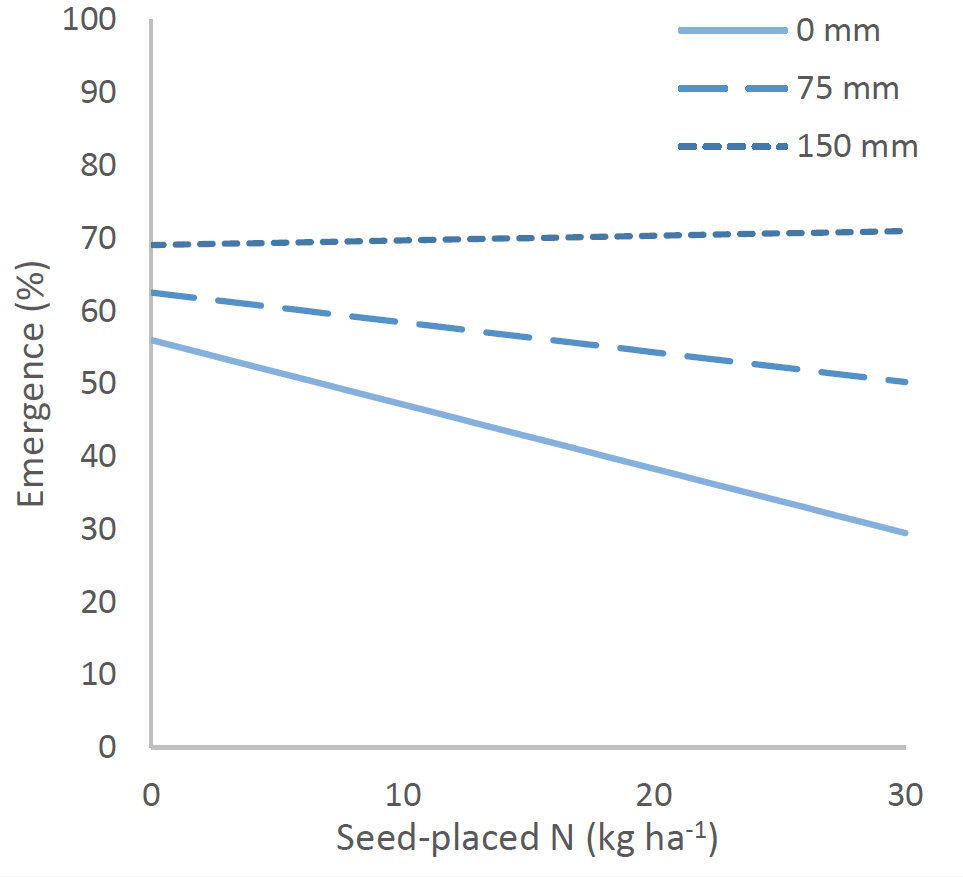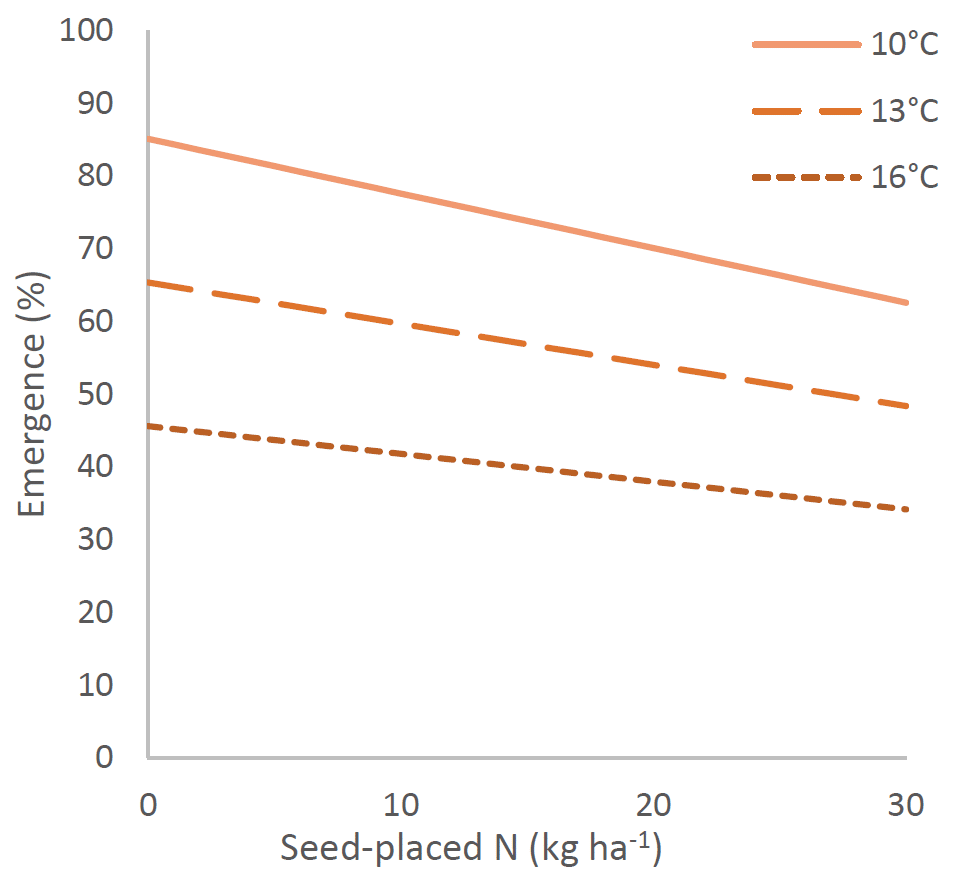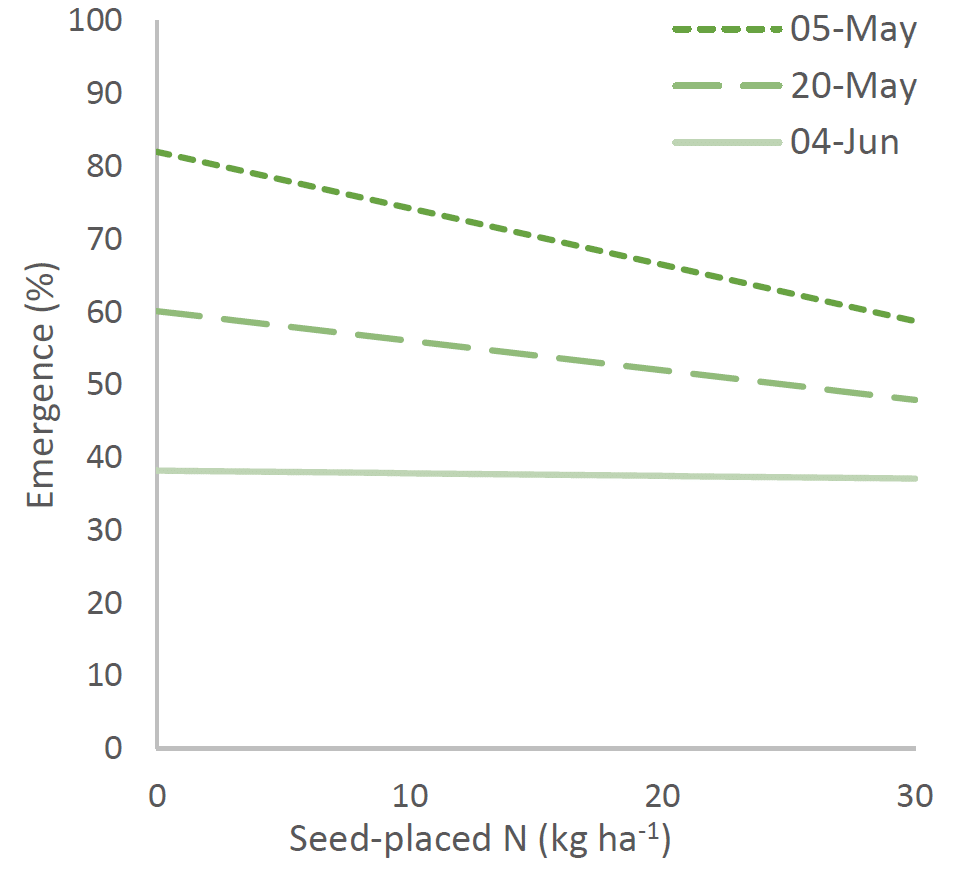Key Result
Adjusting seeding densities under certain conditions can help achieve the optimum plant populations for maximizing canola yields. Seeding rates may need to be increased when seeding at a later seeding date, when high average temperatures or low precipitation are observed before seeding, or expected after seeding.
Project Summary

Overview
Canola emergence rates vary widely with management practices and field conditions, thus it is difficult to know the specific seeding density required to achieve the optimum plant population for maximizing canola yields. It would be beneficial for growers to know the precise range of emergence rates that can be expected based on their practices as well as the local environmental conditions.
Purpose
The objective of this project was to utilize archived small-plot canola agronomic trial data and corresponding regional weather data to conduct a meta-analysis to examine the relationship between environmental conditions and canola emergence.
More specifically, the aim was to quantify:
1) The variability in canola emergence rates in response to environmental conditions.
2) The variability in maturity and survivability in response to plant density and environmental conditions, across the canola growing region.
Growers will become more profitable by maximizing the value of their seed investment, and by more consistently achieving the target plant population recommended for optimizing productivity. The use of archived canola agronomic trial data also provides a value-added use of previous research investments.

Analysis
Agronomic and environmental data from 12 different projects conducted across a total of 47 site-years in Saskatchewan and Manitoba from 2013-2022 were used in the analysis. Single-variable regression and two-variable interaction models with mixed effects were used to examine the effects of individual management and environment variables and their interactions on the percent emergence of canola.
Results
While the overall average field emergence observed in canola production was 60.7%, values ranged from 20-30% to 80-90%, which could be explained by management and environmental variables. Seeding date and average air temperature before and after seeding were the most influential variables and appeared to be related to soil moisture.
Seeding density, seeding date, seed-placed fertilizer, and average pre- and post-seeding air temperature all had negative effects on the percent emergence of canola, while pre- and post-seeding precipitation had positive effects on emergence. The negative effects of seeding date and temperature could be related to soil moisture.
Pre-seed precipitation was more influential than post-seed precipitation, varying from approximately 53% to 72% emergence over the range of values. Canola emergence varied from 57% to 73% over the range of post-seed precipitation observed in the dataset.

The effect of seed-placed fertilizer (nitrogen, phosphorous, and/or sulphur) on canola emergence varied with seeding date, pre-seed precipitation, and post-seeding temperature. The effects of seeding density varied with seeding date, pre-seed precipitation, and pre-seed temperature. Interacting effects between management and environmental variables were more likely under more ideal conditions of the most influential variables, specifically earlier seeding dates, lower average temperatures, and higher precipitation.
More specifically, the interaction between seeding date and seed-placed fertilizer showed that seed-placed fertilizer had little effect on canola emergence when seeded later. When seeded earlier, there was a significant decrease in emergence with increasing rates of seed-placed fertilizer. The later seeding date appears to have a stronger effect on canola emergence than seed-placed fertilizer. The emergence rate is already significantly lower with later seeding dates and so seed-placed fertilizer simply has a relatively lower influence on emergence overall when seeding is late.
Conclusions
Adjusting seeding densities under certain conditions can help achieve the optimum plant populations for maximizing canola yields. Seeding rates may need to be increased when seeding at a later seeding date, when high average temperatures or low precipitation are observed before seeding, or expected after seeding.





